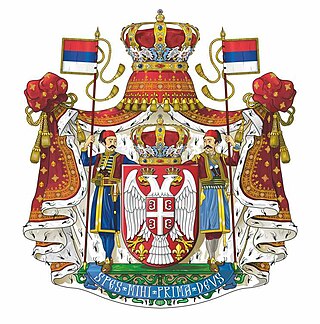
The House of Karađorđević or Karađorđević dynasty is the name of the former ruling Serbian and deposed Yugoslav royal family.

Alexander, Crown Prince of Yugoslavia, is the head of the House of Karađorđević, the former royal house of the defunct Kingdom of Yugoslavia and its predecessor the Kingdom of Serbia. Alexander is the only child of King Peter II and his wife, Princess Alexandra of Greece and Denmark. He held the position of crown prince in the Democratic Federal Yugoslavia for the first four-and-a-half months of his life, until the declaration of the Federal People's Republic of Yugoslavia later in November 1945, when the monarchy was abolished. In public he claims the crowned royal title of "Alexander II Karadjordjevic" as a pretender to the throne.

Mihailo Obrenović was the ruling Prince of Serbia from 1839 to 1842 and again from 1860 to 1868.
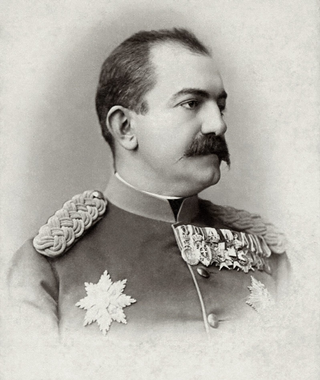
Milan Obrenović reigned as the Prince of Serbia from 10 June 1868 until 1882, when he became King of Serbia, a title he held until his abdication on 6 March 1889. His son, Alexander I of Serbia, became the second King of Serbia.
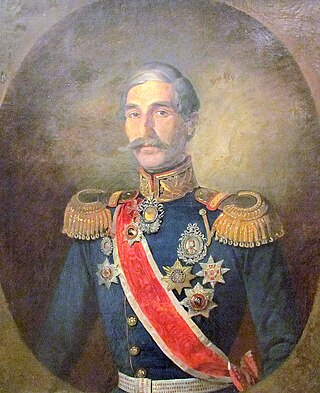
Alexander Karađorđević was the prince of Serbia between 1842 and 1858 and a member of the House of Karađorđević.
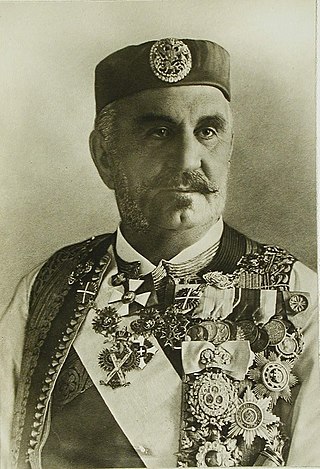
Nikola I Petrović-Njegoš was the last monarch of the Montenegro from 1860 to 1918, reigning as prince from 1860 to 1910 and as the country's first and only king from 1910 to 1918. His grandsons were kings Alexander I of Yugoslavia and Umberto II of Italy among others.

Peter I was King of Serbia from 15 June 1903 to 1 December 1918. On 1 December 1918, he became King of the Serbs, Croats and Slovenes, and he held that title until his death three years later. Since he was the king of Serbia during a period of great Serbian military success, he was remembered by Serbians as King Peter the Liberator and also as the Old King.

Princess Zorka Karađorđević, born Princess Ljubica of Montenegro, was the eldest child of Prince Nicholas I and Princess Milena of Montenegro, who later became the country's king and queen consort. In 1883, Ljubica married Prince Peter Karađorđević and she changed her name to Zorka. She died in childbirth while giving birth to Prince Andrija on 16 March 1890. Prince Andrija died shortly thereafter. Zorka's husband later became king of Serbia as Peter I.

Nicholas, Prince of Montenegro is a French-born architect and the Head of the House of Petrović-Njegoš, which reigned over Montenegro from 1696 to 1766 and again from 1782 to 1918.

Prince Tomislav of Yugoslavia was a member of the House of Karađorđević, the second son of King Alexander I and Queen Maria of Yugoslavia. He was a younger brother of King Peter II of Yugoslavia and a former nephew-in-law to Queen Elizabeth II and Prince Philip.

Filip Karađorđević, sometimes referred to in English as Prince Philip Karageorgevitch and unofficially titled Philip, Hereditary Prince of Serbia and Yugoslavia, is a Serbian business manager, a member of the House of Karađorđević, and heir apparent to Crown Prince Alexander. He is the second grandson of the last King of Yugoslavia, Peter II.
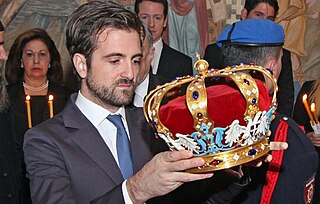
Peter Karageorgevitch, also known as Prince Peter of Serbia and Yugoslavia, is a Spanish-Serbian graphic designer and a member of the House of Karađorđević. He is the oldest grandchild and the first grandson of the last Yugoslav king, Peter II. Between his birth and his renunciation in 2022, he was known as the Hereditary Prince.

Prince Mirko Dimitri Petrović-Njegoš of Montenegro was born in Cetinje, the second son of King Nicholas I of Montenegro and Milena Vukotić. Prince Mirko predeceased his father and his elder brother Crown Prince Danilo.

Milena Petrović-Njegoš was the only Queen of Montenegro by marriage to Nicholas I of Montenegro.

Prince Alexis Karageorgevitch, or Karađorđević, was the head of the senior branch of the House of Karageorgevitch and a claimant to the throne of the Kingdom of Serbia. He served in the First Balkan War of 1912 as a soldier and after as president of the Red Cross until Serbian army's retreat through Albania.

The May Coup was a coup d'état in the Kingdom of Serbia which resulted in the assassination of King Alexander I and his consort, Queen Draga, inside the Stari Dvor in Belgrade on the night of 10–11 June [O.S. 28–29 May] 1903. This act resulted in the extinction of the Obrenović dynasty that had ruled Serbia since the middle of the 19th century. A group of Royal Serbian Army officers led by Captain Dragutin Dimitrijević (Apis) organized the assassination. After the May Coup, the throne passed to King Peter I of the Karađorđević dynasty.
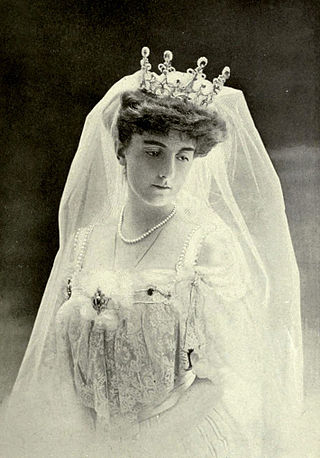
Natalija Konstantinović was a Princess of Montenegro, as the wife of Prince Mirko Petrović-Njegoš. By virtue of marriage she was member of the House of Petrović-Njegoš, ruling family of the Kingdom of Montenegro. The couple had five sons; however, two died in early childhood. They divorced in 1917, a year after the royal family was forced to flee the kingdom. She was the granddaughter of Princess Anka Obrenović of Serbia, member of the ill-fated House of Obrenović. Her husband was promised the Serbian crown in the event of King Alexander I dying childless; however, the crown went to Prince Peter Karađorđević, her husband's brother in law, following Alexander's assassination in 1903.

Persida Karađorđević née Nenadović was the Princess of Serbia as the wife of Alexander Karađorđević, who ruled the Principality of Serbia from his election on 14 September 1842 until his abdication on 24 October 1858. She was the mother of ten children, including future king Peter I of Serbia, who succeeded to the throne after the assassination of King Alexander I, the last ruler of the Obrenović dynasty.
The Montenegrin nobility (1852–1918) are notable people of the Principality of Montenegro and the Kingdom of Montenegro who hold titles such as Veliki Vojvoda, Knez (Prince), Vojvoda (Duke), Serdar (Count), and Guvernadur (Governor). The titles are hereditary or personal. Focusing on the Montenegrin nobility of the late 19th century surrounding the then recent secularization of the Principality under Danilo II and his court, excluding the older traditional clan nobility.



















